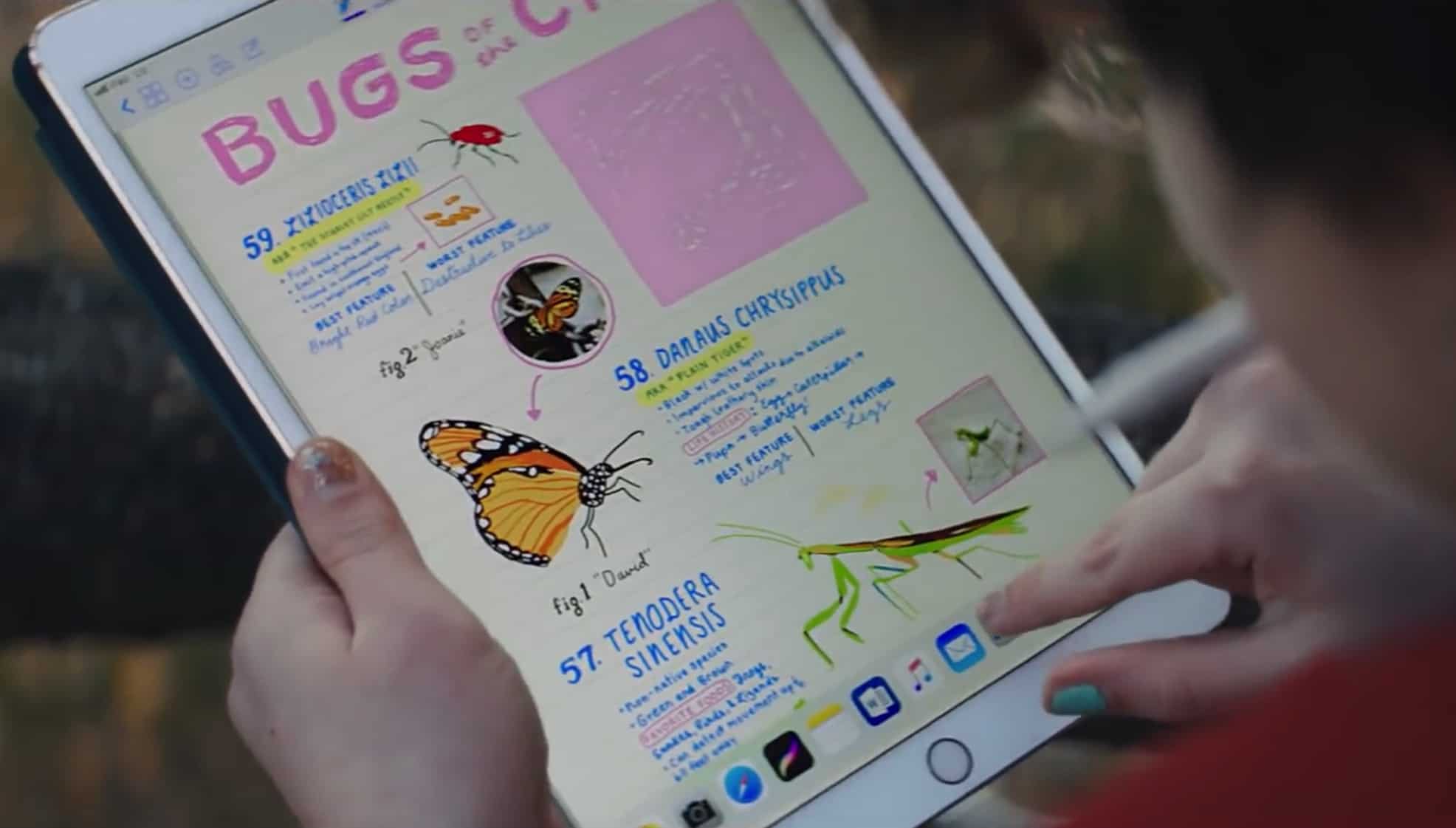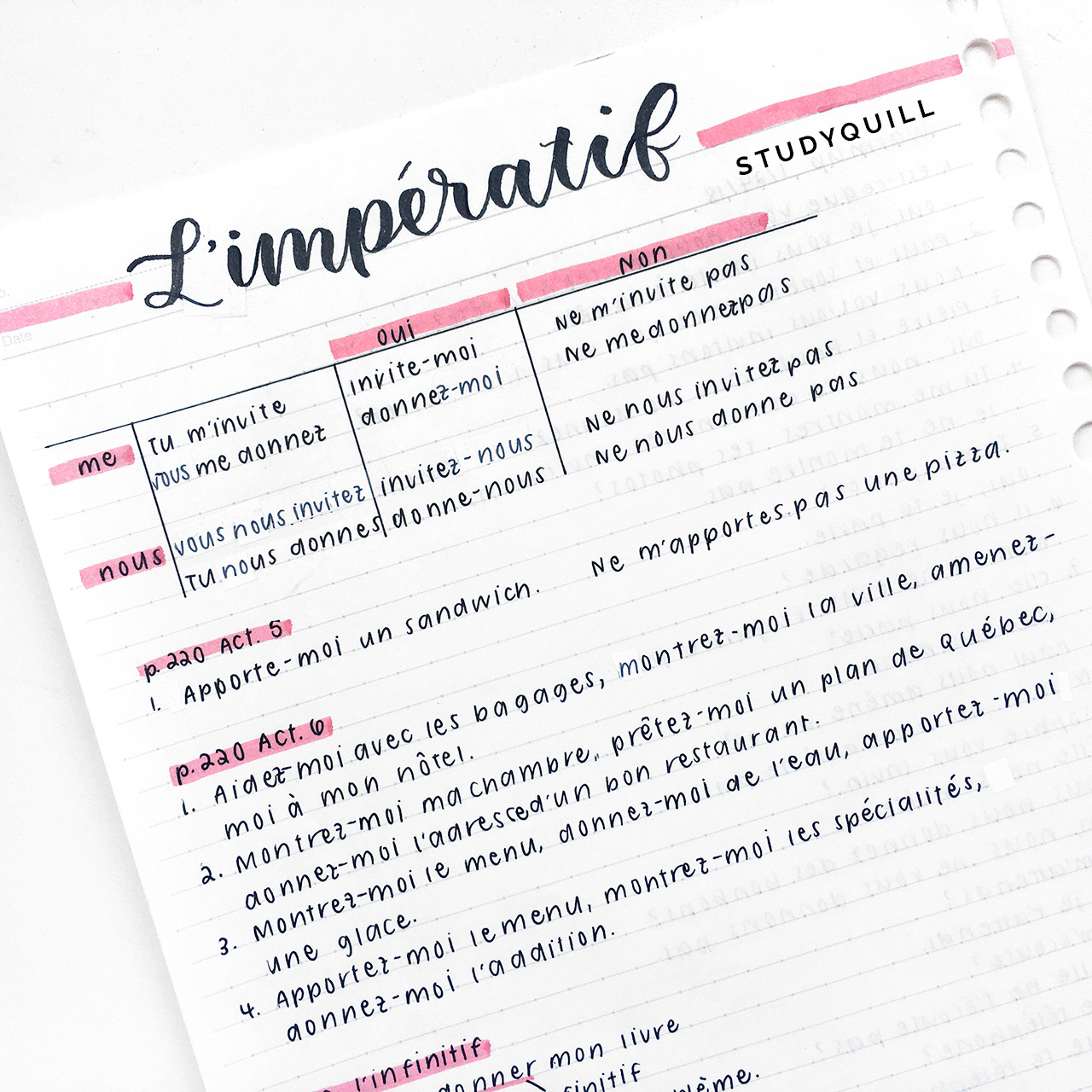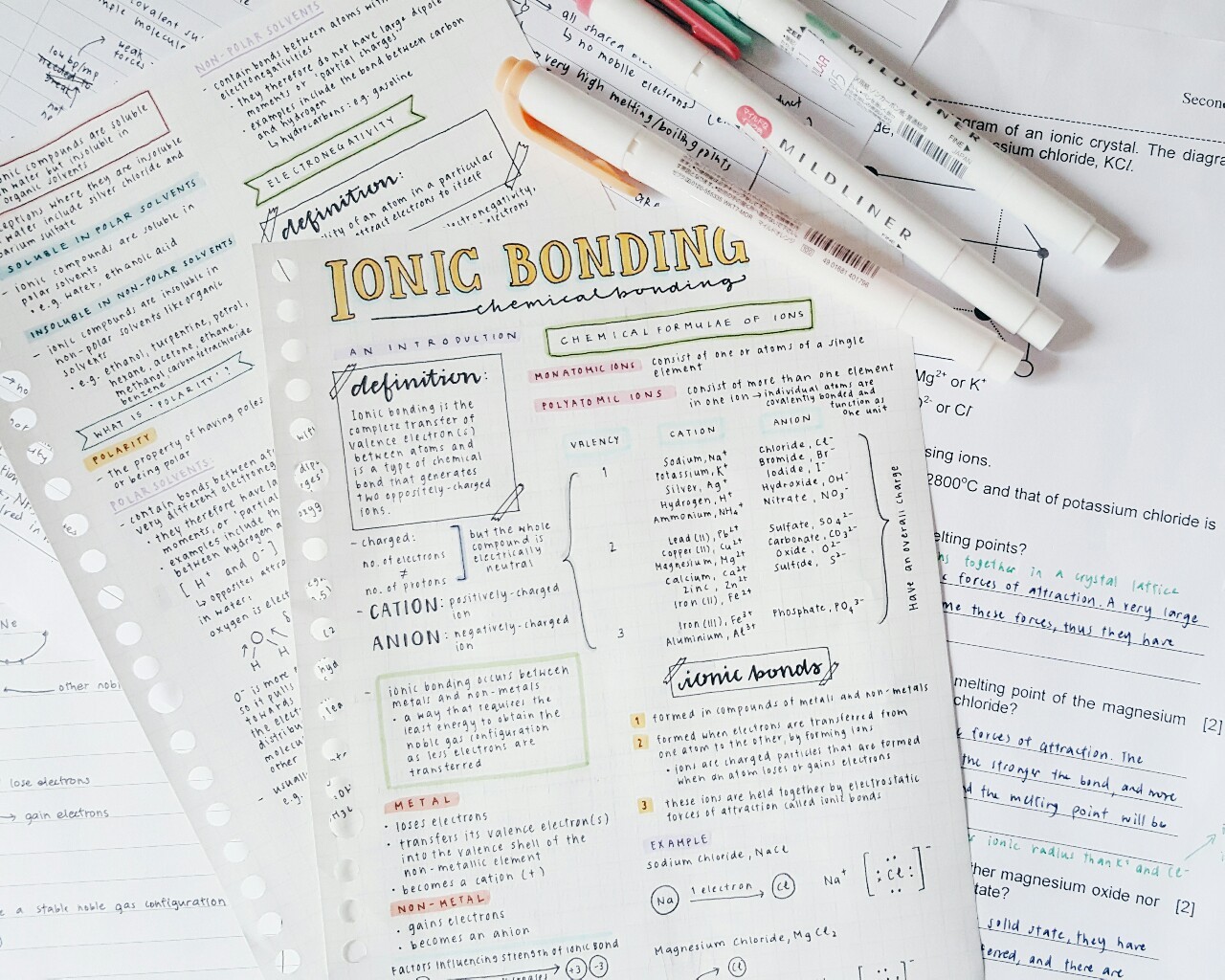
Cornell Notes Are Only Effective If You Follow These Steps
Cornell notes are only effective if you write useful questions in the cue column and regularly revise them. Without the revision step there is almost no point in writing them in the first place.
Common mistakes people make with their cornell notes + how you can avoid them
#1 Some people write their the notes, file them away and then never look at them again
The most important part of Cornell notes is revising them. In fact they are designed for revision. There is no point spending all that time taking your notes and then never studying them. That is why on my vertical Cornell notes printable template I have included a revision tracker to encourage students to revise their notes.
#2 Some people do not write effective questions that relate to the information in the notes box
The questions in the cue column are there for you to study. It is important to write very specific questions that directly relate to your notes. You also need to make sure that your notes are relevant and cover all the dots points of your syllabus. The more questions you write the better because as you revise them you will learn more content.
#3 Some people do not complete the summary in their owns words
Reproducing what you have learned in your own words is an important step of the learning process. It forces you to think deeply about what you have just learned and through that process makes you properly learn the content. Writing a summary is the review stage before you can do active recall.
My method for writing the summary is to cover up the notes box and then write a few sentences in pencil as my summary. I do this as soon as possible after the class because all the content is fresh in my mind and it also makes sure that I have a good understanding of the content. I then uncover my notes and then reread through my notes. I add any more important information that I missed out on and erase information that is not correct. After that I go over my summary in pen so it is permanent.
How to properly revise Cornell notes
1. Cover up the notes box and summary box with a piece of paper or equivalent
If you have used a printable Cornell note template you can print a second template, cut around the notes and summary box and use it to cover your notes and summary. This way you will have an exact fit over your notes and summary.
Covering up the notes box and summary box is important so you don’t cheat your way through revision. Without a piece of paper or your hands covering up the information you might glance at it, recognise it and then tell yourself that you know it. The problem with that is that you won’t be able to reproduce the information when it comes to the real test or exam. By covering up your notes you will avoid this illusion of competence.
2. Ask yourself the questions you have already written in the cue column
Next you need to ask yourself the questions you have already written in the cue column. Ask one question and then remove the piece of paper and check that you got it right.
- If you answered it correctly you can proceed to the next question and repeat the process.
- If you got it wrong I suggest that you re-read the relevant section of your notes and ask yourself the question again.
This study method of covering information, encourages active recall and makes sure you actually know your stuff. At first it might seem like a lot of work because you have to focus on remembering without using any additional tools or notes. But it is through active recall that you can move information from your short term memory to your long term memory efficiently.
3. Revise your notes regularly
The last step for revising your Cornell notes is to repeat the whole process multiple times. Use your notes to repeatedly test yourself on the content. Ask yourself and question and then challenge your brain to retrieve the answer. Each time you revise I suggest noting it down to keep a track of how much you have studied.
You can also apply spaced repetition theory to how often you study your notes. For example studying them 1 hour after writing your notes, 1 day after writing your notes, 1 week after writing your notes etc. If you are interested in learning more about spaced repetition I suggest that you read my article – how to overcome the curve of forgetting.
Constantly revising is so vital to moving the information from your short term to long term memory so that is why I have added a revision tracker to my vertical printable Cornell notes template. The revision tracker is just a line of 5 small dots in the top right hand corner of the summary box that can be coloured in to keep track of each time you study your notes.
Cornell Note Taking Templates In Depth
Portrait/Vertical Orientation Cornell Note Taking Template + bonus revision tracker !
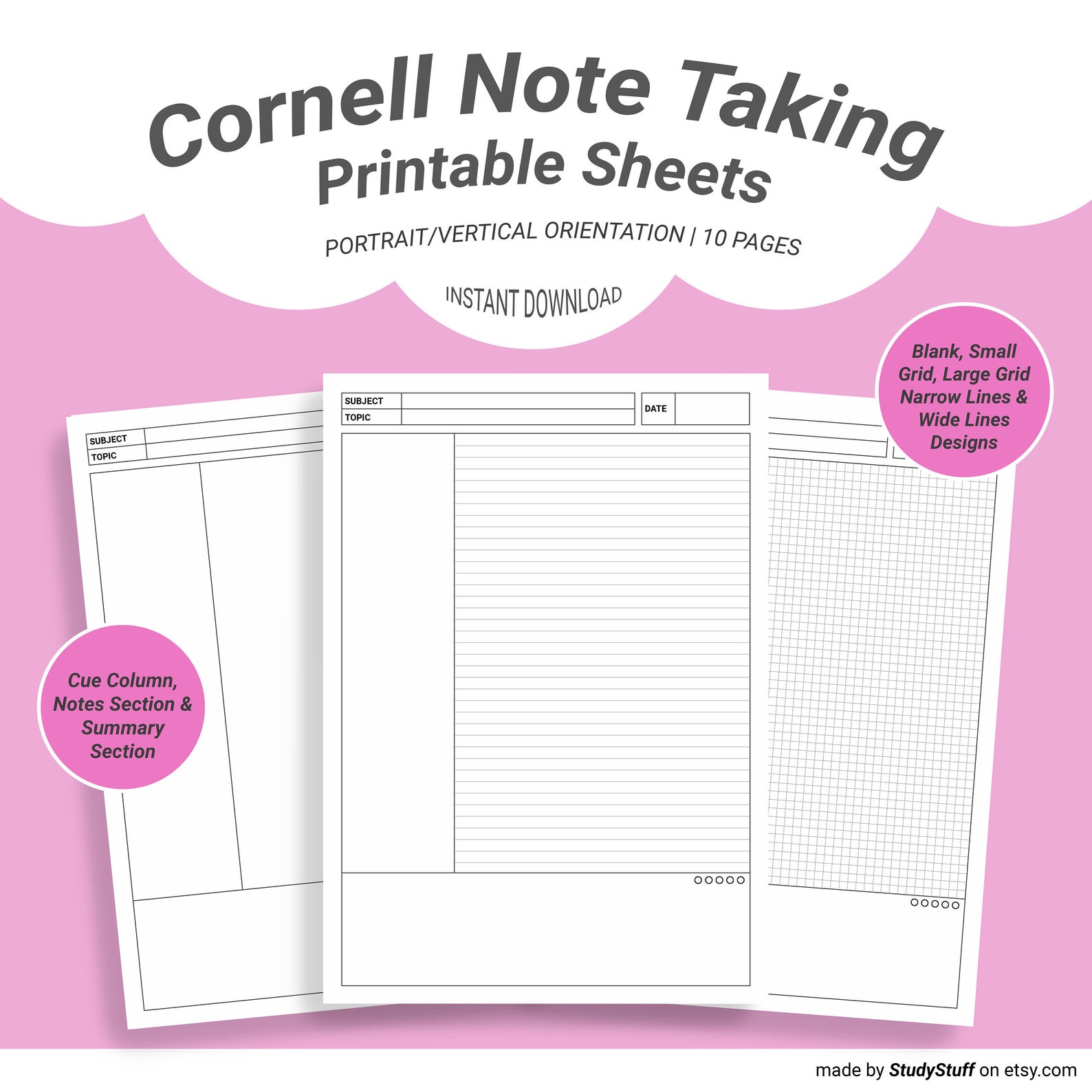
Includes one PDF with 10 pages
☆★☆★☆★WHAT’S INCLUDED★☆★☆★☆
- Pages with Title, Subject & Date Sections
- Pages without Heading Sections (Full Page Notes)
- Blank Designs
- Lined Designs (narrow & wide)
- Grid Designs (small & large)
+ Awesome Revision Tracker (Simply colour in a circle in the summary box when you have reviewed your notes)
Find this template here!
Landscape/Horizontal Orientation Cornell Note Taking Template
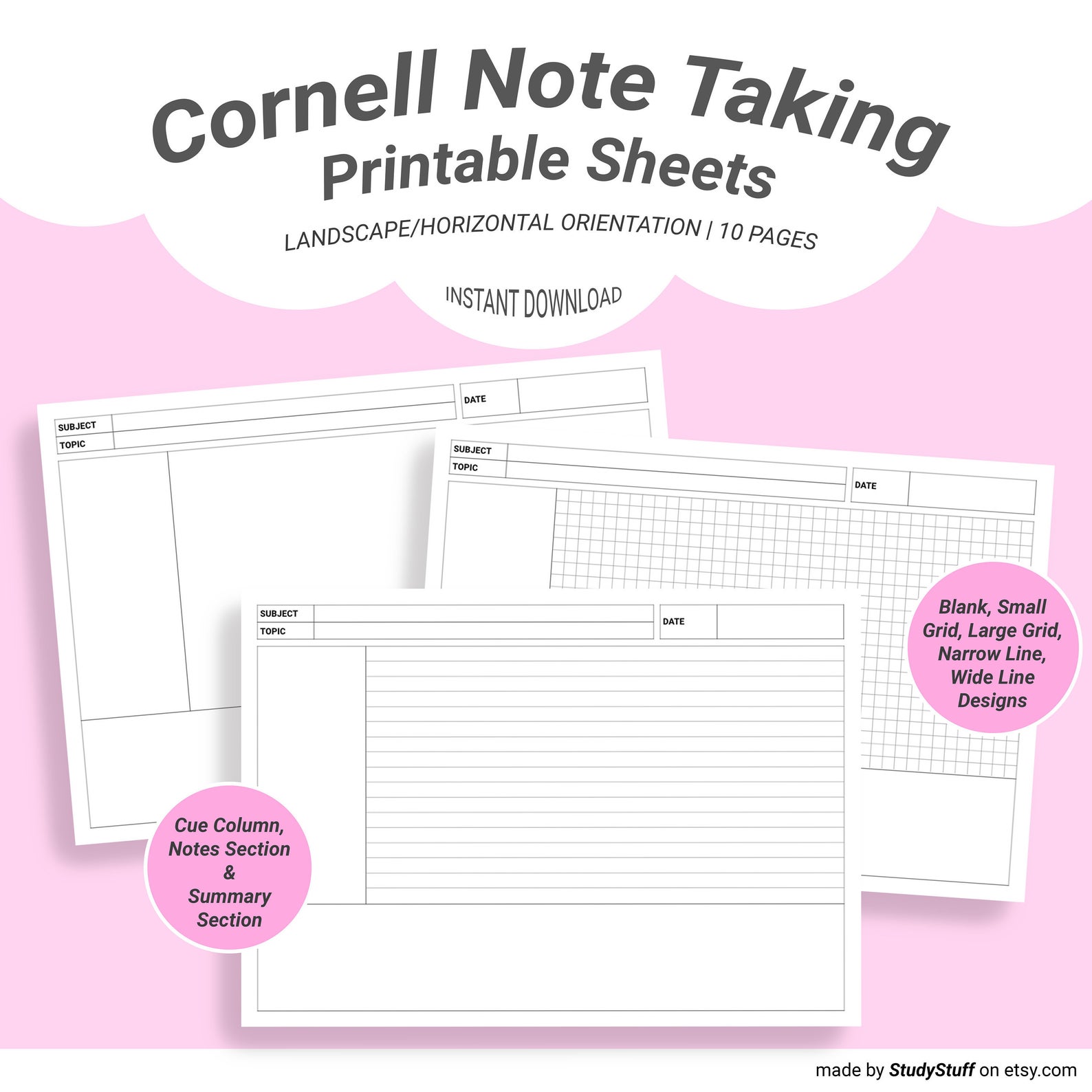
Includes one PDF with 10 pages
☆★☆★☆★WHAT’S INCLUDED★☆★☆★☆
- Pages with Title, Subject & Date Sections
- Pages without Heading Sections (Full Page Notes)
- Blank Design
- Lined Designs (narrow & wide)
- Grid Designs (small & large)
Find this template here
Before you go!
Do you know what the best note taking strategies are?
Be sure to check out my article about it here so you don’t miss out!
If you take notes using your iPad, you need to know these 12 iPad note taking tips! They will make …
There are many different note taking methods that can work well for language learning. To take effective notes for language …
To take pretty notes you need to firstly choose a consistent colour scheme. Next you should draw an eye catching …
To take notes on a PDF on an iPad you need to use a note taking or PDF reading app …
To get motivated to do school work one should set SMART goals, work in a motivating environment, break large projects …
To take aesthetic notes one needs to choose a consistent colour scheme, use eye catching titles and headers, invest in …

